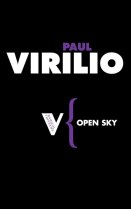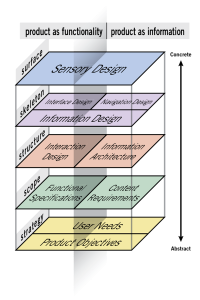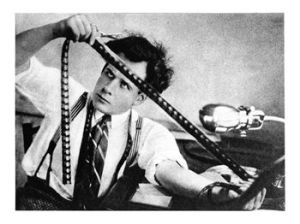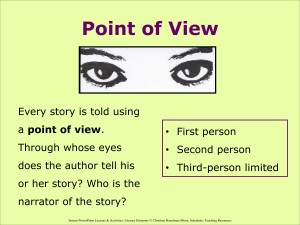Here is my website! This site was made using Wix.
Open Sky Part III
Virilio quotes video maker Gary Hill: “Vision is no longer the possibility of seeing, but the impossibility of not seeing.”
I thought that this was an interesting part of his introduction to part three. After this quote, Virilio talks about how the ban on representation within certain cultures and the refusal to see is being taken over by the fact that there is a sudden urge to see now that the visual world is replacing the written world.
He uses the example of women in Islam to support this. My first question is whether or not it is right to have this “cultural obligation” to see and to visualize but to have this ban on women and allowing others to see them? And does this make Islamic women the exception to the “object-women”?
I think this goes along well with Virilio’s description of “conscientious objection”, which is characterized by our inability to be amazed by what is being shown to us through media these days. It applies to the example of Islamic women because for many people, it’s not longer a shock that we cannot see what these women are wearing but simply we don’t think anything of it anymore. It’s his idea of perceptual disorder that prevents us from truly seeing images from the way they were intended to be viewed.
In a similar way in regards to how we see and visualize things is in fact changing, so is the concept of design. Virilio talks about how things aren’t designed from the multimedia screen object where as now they are designed through a metadesign of a computer-assisted perception. He talks about his difference in design when talking about plastic surgery for eyesight. It’s the concept, and accepting one concept as no longer an illusion or a futuristic idea, but a reality.
Open Sky Part II
“Travel is a kind of doorway which you leave reality as though you were entering an unexplored reality that seems like a dream.”
Virilio talks about travel, but not travel in a sense that you and I know; travel provided by technology. This quote makes me think of whenever you have a movie and the maincharacter gets a head injury and is taken to a dream or essentially what seems like another place. In a sense this is what Virilio is talking about when discussing travel. He is talking about how travel has been taken by this scene, this scene through a surveillance screen.
This is not in any way conducive to how we as humans were supposed to be existing with one another. There was not supposed to be any sort of hindrance to the freedom of man, but as we “travel” with technology it seems to be changing this aspect of life.
We are accelerating much faster through everyday than and taking us away from what we were supposed to be: interactive.
What I struggle with while reading this portion of part II, is that is technology in some ways helping us get places faster? We can get from one place to the next in a much more efficient manner than we used to be able too. So what’s the issue? Is it that we aren’t actually spending enough time with each other in general even though we are getting there faster? Or maybe it’s the clear fact that once we are in one place, we can’t wait to get to the next?
Open Sky Part I
 Open Sky is a book written by Paul Virilio in 1995 about “information technology and the global media.” One of my first thoughts of this book is how interesting it is that to be written by an artist who originally trained in stained glass art. With in the first few sections of Part I, it is evident that his experience enabled him to write this book.
Open Sky is a book written by Paul Virilio in 1995 about “information technology and the global media.” One of my first thoughts of this book is how interesting it is that to be written by an artist who originally trained in stained glass art. With in the first few sections of Part I, it is evident that his experience enabled him to write this book.
His book starts off by talking about the difference between real-space and real time. From what I can understand, real-time is what is currently happening in our technologically advancing world where these technologies are creating a new dimension to life in comparison to real-space, where it literally creates dimension by using infrastructure.
 Meeting at a distance is talked about as being in here and there at the same time. This is only conceivable in our time with the type of technologies that have come out even in the past five years. My first thought was how easy it is to be at a job interview that is three states over while being in your own home. Things like Skype or FaceTime have made this distance a possibility.
Meeting at a distance is talked about as being in here and there at the same time. This is only conceivable in our time with the type of technologies that have come out even in the past five years. My first thought was how easy it is to be at a job interview that is three states over while being in your own home. Things like Skype or FaceTime have made this distance a possibility.
Virilio talks about and defines the importance of space and time. Space and time are literally being defined by our technology and we are the reason for why it’s almost being warped. FaceTime is a great example of how we are doing this. We are closing the distance and completing other tasks at the same time — it’s truly remarkable when looking even at ten years ago.
Video Project
“The Elements of User Experience”
Jesse James Garett, writer of the book”The Elements of User Experience”, is one of the founders of Adaptive Path which is a user experience consultancy located in San Francisco. For more information on information architecture resources, you can visit his personal website at www.jjg.net.
For today’s reading, I had to read chapters one and two in his book “The Elements of User Experience”. The first chapter, User Experience and Why It Matter, is all about the importance of user experience in the making of products and why it should NOT be overlooked in production. Garett defines user experience as “the experience the product creates for the people who use it in the real world.”
Before leading into user experience and the web, he talks about the importance of not how the product works and if it works, but how the product actually works from the outside. Like he suggests with the buttons, it makes me wonder how many products that I have had or have that work, but not consistently because of the design.
User experience on the web, is just as important if not more important that the experience with a product. If someone has good user experience on your site, than that means good business. The content of your site, regardless if you sell anything, is going to get more people to come back to view your site. THIS IS GOOD BUSINESS.
Once you understand the concept of good vs. bad user experience, then you can begin to build a better experience for your users. Chapter 2, Meet the Elements, talking about the decisions that are made in order to make a good user experience. They are as follows:
1. The Surface Plane
2. The Skeleton Plane
3. The Structure Plane
4. The Scope Plane
5. The Strategy Plane
Each of these planes help the website to become the most useful for a user to have that good experience that Garett is talking about and play into all aspects of the design of a good website for users. 
Letting Go of the Words
Janice Redish’s article, Letting Go of the Words; Writing Web Content that Works, is about exactly what the title suggests; writing web content that works and can be interpreted by your audience. This is MOST important when writing web content, thinking about the kind of people who you want to reach out too. If you have a specific group of people who are intended for, you must learn to understand your audience in order for the content to appeal to them.
Redish provides a list of seven small things to do in order to know and understand the audience or audiences that you are hoping to reach.
1. List your major audiences
2. Gather information about your audiences
3. List major characteristics about your audiences
4. Gather your audiences’ questions, tasks and stories
5. Use your information to create personas
6. Include your persona’s goals and tasks
7. Use your information to write scenarios for your site
After reading into each one of these suggested steps to knowing and understanding the audience, it seemed like something similar to an interview or a detailed research on your audience.  The only way to reach out to them successfully when starting to write the content, is to do this research and gather as much information as possible. Once content has been started and there is a site that people (hopefully people from the audience that you are trying to reach), you will be able to gather even more information about what your particular readers will want based on their traffic on your site.
The only way to reach out to them successfully when starting to write the content, is to do this research and gather as much information as possible. Once content has been started and there is a site that people (hopefully people from the audience that you are trying to reach), you will be able to gather even more information about what your particular readers will want based on their traffic on your site.
I found this diagram that I felt was another way to show how to go about finding information about the audience that you want to reach. After having done the research, the information gathered is what helps you create key phrases, emotions and other ways to really relate to the audience when they visit your site.
After reading the article, I found that the key phrases is probably what I think is one of the most important things to know and display when developing web content. Key phrases are in my opinion the most important because they are what the people relate to the fastest and they find that that”s what continuously brings them back to a site.
This video describes the main points of this article very well, and it’s pretty short! It just emphasizes the importance of selecting an audience or two in order to have the most successful experience possible.
Point of View
John Douglass and Glenn Harnden’s chapter on Point of View was the reading for class this week.
In this chapter, they cover three ways to shoot while thinking of perspective. These three ways are POV shots, Perspective of the Storyteller, and Character Point of View.
This picture simply portrays exactly what Douglass and Harnden’s objectives were throughout this chapter. Each of these techniques are used for shooting specific scenes or specific genres when talking about film or TV.
For example, POV shots are most commonly seen in horror or dramatic movies. One example is the famous shower scene in Alfred Hitchcock’s Psycho, where the the camera goes back and forth from the shower to the eyes of the “mother” until the “mother” begins to commit the murder and the perspective is all from her point of view.
This particular angle in a film creates the suspense that is so often craved when watching a horror film. In this scene, there is also use of character point of view as well. Quick shots of her doing math at the table, or turning on the shower head are examples of this. Depending on the film, certain shots are more affective on the audience. Documentaries typically use Perspective of the Storyteller, well because that’s exactly what the storyteller is supposed to be doing in a documentary! With that said, it’s important to note that using this technique may be counteractive if used in the wrong setting or for too long, like most of these techniques. The key is to switch it up, but in a way that enhances the plot of the movie, show, etc.
Aesthetics of Editing

Einstein looking at film. I found this picture and it reminded me of what editors/directors might do (except in modern day) in order to tell the story of the movie or TV show.
In Osgood and Hinshaw’s chapter on Visual Storytelling, I literally got a sense of how important treating film and editing like how someone would tell a story. Well duh, is probably what you are thinking when you think of every movie or TV show that you have ever seen, but I am talking about the cuts and the edits that the director has to make in order to tell that story that we recognize on the big or small screen.
What I enjoyed most about this chapter was the section called ” The Psychology of Editing”. The title may suggest that seems simple enough, but I had never realized how much thought is put into every cut and edit that a director makes while editing. It always just seemed that the script worked itself out and the director cut where he or she wanted to shorten it. A las, this is not the case.
For example, everyone knows about the saying that “a picture is worth a thousand words“, just as these two authors use in this chapter. What this chapter and this section made me think of more specifically is how boring our movies would be without the sounds and the dialogue over the picture. Awful in my opinion, but I guess some had to deal with it at some point!
Osgood and Hinshaw’s goal in this particular section is to portray to the reader just easy it is to change around a shot just by moving the camera to a different angle. 
And it’s all truly a way in playing with the viewer’s emotions, deciding what angle or what cut is the most resonating or eye catching with the audience.
The video projects that we are working on now are only five minutes, but the amount of decisions and we have to make as “directors” or editors will either make or break our videos. This is what Osgood and Hinshaw want us to take away from this section; about how crucial these decisions are and who you should be thinking of when making these decisions.
Forces Within the Screen
Written by Zettl, this article focuses on the importance of being able to fit “the event” inside it’s respective screen whether its a television, computer or motion picture screen.
When talking about “Horizontal and Vertical” planes, there is one section that really grabbed my attention; “Tilting the Horizontal Plane”. Why? because he talks about how we can so easily distinguish a straight line versus something that’s crooked. So what happens when you see this picture of this car?
It’s disorienting, isn’t it? I looked at it, and my first reaction was that I tilted my head to “match the tilt”. I reason that I did this subconsciously to try and straighten it even though its physically impossible to do so anymore because the picture has already been taken.
Based on my understanding of the reading, I would say that this tilted horizon is stressed because of the lean towards the camera or, well you as the viewer. This adds an automatic intensity to the picture.
Just look at it compared to this picture of a car where the horizon is straight:
The car is obviously on a track and I am certain that it would probably go just as fast as the one previously mentioned, but there is something that is clearly less intense about the photo and about the car itself. It suddenly makes it obvious as to why add companies use such particular angles when shooting car commercials; they have to get all of that information and feeling within their frame, the screen.





